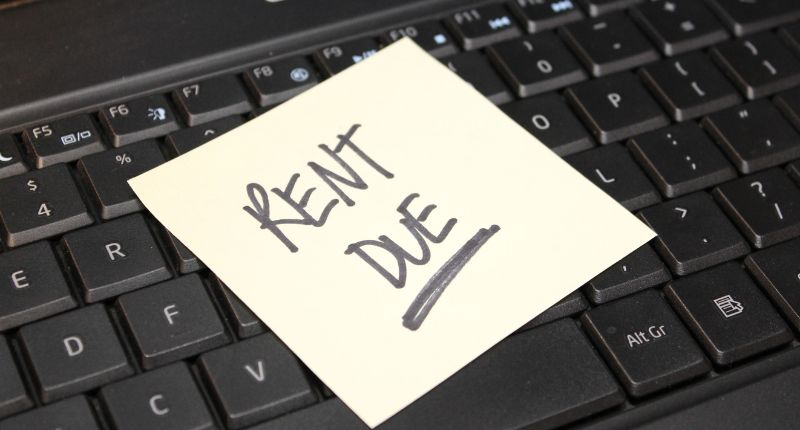- Rental affordability remains a hot button topic
- A rent freeze may provide relief for renters in volatile market
- Long term effects of rent freeze policy disputed
The subject of rent freezes has dominated public discourse recently, with the Australian Greens at loggerheads with the Albanese government demanding the inclusion of a short-term rent freeze in the Labor government’s stalled $10 billion housing bill.
The Greens are calling for a two-year emergency freeze on rent, followed by a rent cap where rent increases must be within stipulated limits. In theory, this would give tenants some reprieve amid rising interest rates and market volatility, as rent payments will be broadly stable.
How high have rents increased?
Dr Chris Martin, Senior Research Fellow in the City Futures Research Centre at UNSW Arts, Design & Architecture, states, “Rent increases have been getting much larger and more common.”
The national average of asking rents increased by 11% last year. In Sydney alone, the median average weekly rent has surged by 20% over the previous year to $650 per week.
New South Wales Median Rent

“When properties are re-let, a new tenancy commences and 95% are getting a higher rent than for the previous tenancy,” Martin says.
“Most are going for at least 10% more than previously let. About 75% of properties with existing tenancies have recorded rent increases over the past 12 months, and about 25% are getting increases of more than 10%.”
Martin states that a rent freeze, followed by a rent cap, will protect current tenants from rents increasing to comparable levels. He explains that substantial rental increases are an important price signal to landlords, supporting a fresh supply of new rental properties other than existing stock, like newly built, underused, or unused properties.
“The goal is to expand the rental market by increasing available housing options.”
“That price signal is currently going into the existing stock; as landlords increase rent prices, tenants are being pushed out of their existing homes. That brings the property to the market but also means there’s another tenant looking for a lower-cost rental property or are being made homeless.”
“By regulating rent increases for existing tenants, the price signal from the new tenancy market is directed into sources of genuine new supply.”
In short, the Greens’ proposal allows the rental market to expand sustainably while meeting the urgent needs of tenants facing homelessness or housing instability.
Is a rent freeze a race to the bottom?
Dr Peter Swan, a Professor in the School of Banking & Finance at UNSW Business School, said no one wins from a rent freeze, with such a policy likely making the rental crisis far worse for tenants and landlords.
“While it is true that tenants who are not evicted may gain temporarily, tenants as a whole lose as rental accommodation is withdrawn, fewer new places are provided, and maintenance of rent-controlled housing deteriorates,” Swan says.
“Rental rates rise due to restricted supply, while landlords with sitting tenants suffer. Eventually, a black market evolves with ‘protected’ tenants unable to move and with the rampant use of sizeable ‘key money’ paid by prospective new tenants.”
“The latest version of the Residential Tenancies Act 1997 in the ACT reveals that pre-existing rent control in Canberra has doubled in its severity in 2019. It now limits rent increases to no more than 10% above the increase in the rent component of the ACT Consumer Price Index (CPI). It was previously 20%.
“As a result, it has left some landlords no option but to sell their properties, leaving evicted tenants back on a tighter rental market.”
Professor Swan explained how another example can be seen in the Californian Tenant Protection Act of 2019, which imposed a 10% cap on rental increases.
According to a 2018 analysis by the National Bureau of Economic Research (NBER) on San Francisco legislation, rent control resulted in a 15% reduction in rental supply as landlords converted their properties to exempt building types, subsequently causing a 5.1% rise in rents.
“The repercussions of these circumstances result in a significant portion of tenants being at risk of eviction and will face the challenge of re-entering an increasingly competitive rental market, where they may be required to pay, effectively, a substantial increase in rent in the form of a bribe to secure a new place.”
Cutting red tape and looking across the globe for solutions
Any policy aimed at the rental crisis must consider the needs of both renters and landlords. For Dr Swan, the only way to solve the sky-high rents is to address supply-side issues.
“The solution to the crisis lies in boosting the housing supply. However, governments and councils commonly exhibit significant reluctance when it comes to permitting new developments or streamlining bureaucratic processes plagued by excessive regulations and prolonged delays,” says Swan.
Indeed, governments and councils have historically been reluctant to approve new developments and resisted calls to simplify bureaucratic processes.
Dr Martin also explored some of the examples seen elsewhere in the world.
“Scotland implemented a rent freeze in September 2022, and in April 2023 moved to a rent cap of 3 per cent, in most cases. For years, most Canadian provinces have had rent caps – called ‘guidelines’ there – that limits rent increases to a certain percentage rate set by the government,” Martin says.
“Ireland has a system of ‘rent pressure zones’, if a local government area records increases in median rents above a certain threshold for successive quarters, a cap kicks in, currently 2 per cent, and not more than once in 12 months.”








